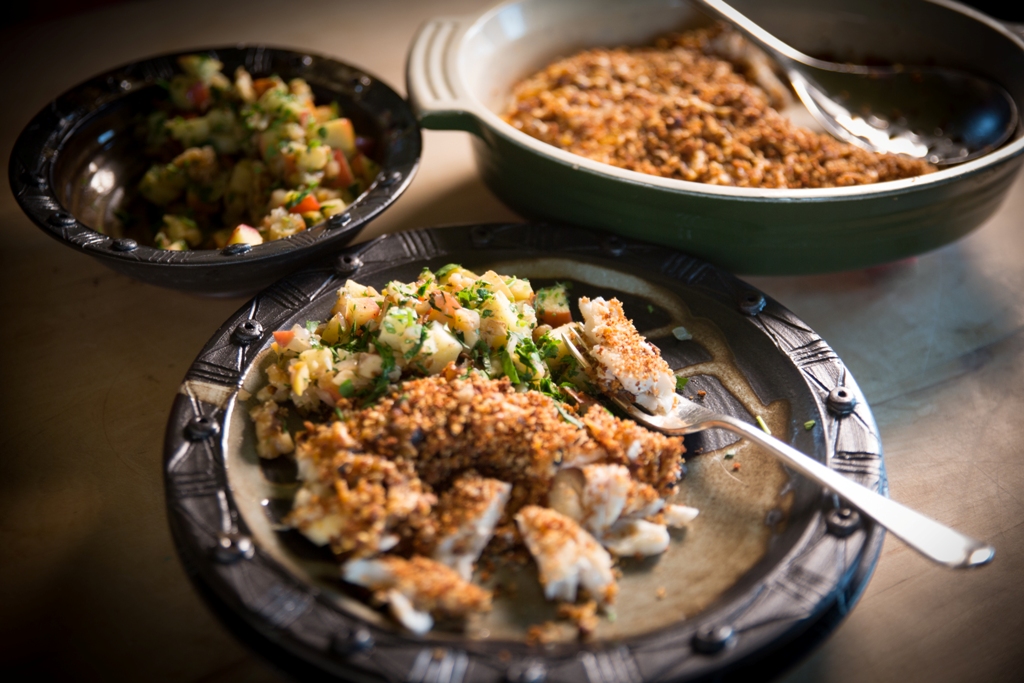Discover new products and recipes from Orkney's food and drink producers with our feature, Exploring Orkney's Larder.
Our regular food blogger Rosemary Moon has been taste-testing some of the best cheese in Orkney recently, from fabulous farmhouse batches to flavoured and smoked artisan examples. Keep reading for a delicious recipe for you to try at home too.
Armistice Day has just been observed. The two World Wars have left many legacies in the islands, including an edible one.
When the troops, all their support staff and the prisoners of war - including those who built the Churchill Barriers and the Italian Chapel - left Orkney after World War II, there was an over-supply of local milk. A co-operative of dairy farmers created Orkney Cheese, which is still producing Orkney Cheddar seventy years on. Making the cheese with local milk and by traditional methods means that Orkney Cheddar carries PGI status: it is protected and celebrated by EU law because of its heritage.
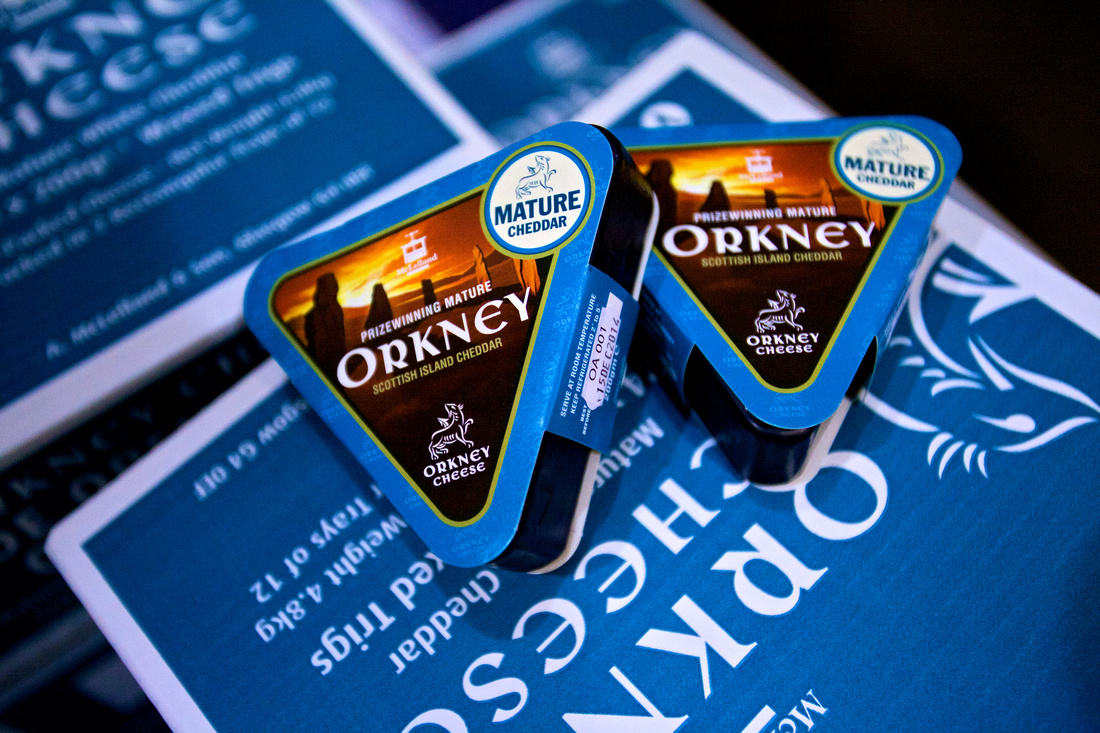
The 1500 litre vat takes an hour to fill. Annato, a natural food colouring, is added to make the coloured Cheddar which is eighty per cent of production and a starter to begin the process of thickening the milk. Vegetarian rennet is added to start forming the curds. The thickening liquid is very gently cut and cooked in the vat during a very slow process which ensures the even texture of the finished cheese. When the vat releases its contents onto the cutting tables the milk has become curds and whey. This can be seen from a public viewing platform during production; Lesley told me that around 1100 is a good time to visit. The whey is separated off and used for the company’s excellent butter. Having had sixteen lots of visitors during our first year in Orkney, I can assure you that the local butter has been devoured in large quantities in our house with everyone commenting on its wonderful flavour.
The curds are salted on the cheese tables by hand while constantly being gently turned by rotating overhead comb paddles - this is the dry-stir method used by Orkney Cheddar to stop the curds sticking together in lumps - think browning mince in a pan without stirring it and how that forms lumps; you certainly don’t want lumps in cheesemaking. Adding the salt looks like traditional seed sowing with it being scattered into the curds as the salter walks up and down the tables. The flavour of the curds mellows as the salt dissolves into them, then they are pushed to the ends of the tables where they are broken up for the final time in a auger before being made into 20kg blocks. 300 blocks are made a day, that’s 6 tonnes of Orkney Cheddar!
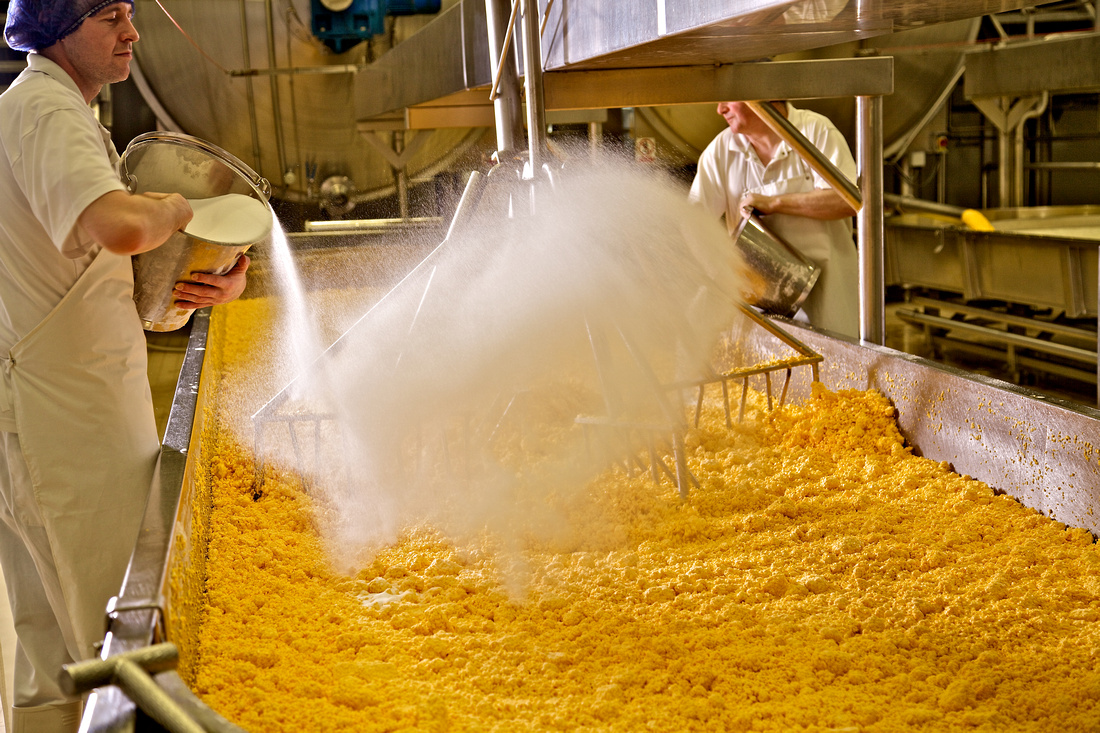
The cheese store contains about one year’s supply of Cheddar being matured at 8C. Orkney Medium is matured for 5-7 months and the Mature and Extra-Mature for 12-15 months. Because of the milling and careful packing, the cheeses do not have to be turned in the store: farmhouse or cloth-bound cheeses have to be turned frequently, often daily.
Lesley explained that most of the Orkney Cheddar production goes to a distribution company for sending on to their many customers on the mainland and internationally. The remainder is despatched or collected from Hatston by local businesses and private customers. The Island Smokery, Humes Quality Artisan Foods and Jollys collect the cheese for smoking and the smoked cheese is then available in Orkney’s local food shops, many of which also stock our other Orkney cheeses. The Island Smokery also produces a range of flavour-added cheeses with the Orkney Cheddar: check out the red onion, garlic and chilli if you enjoy this style of cheese.
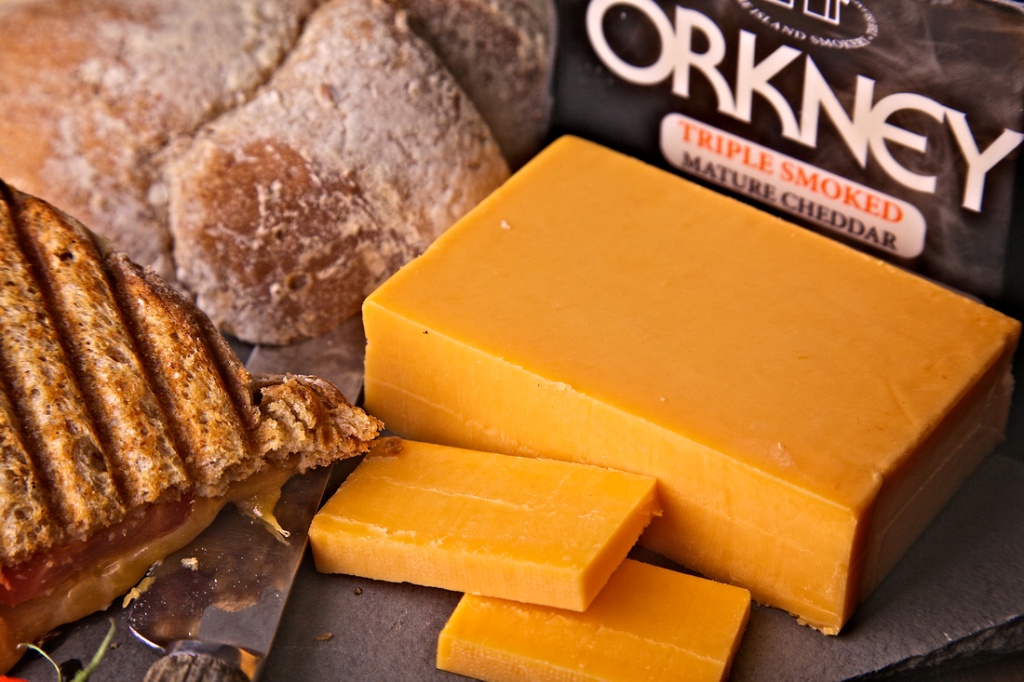
In Westray, I caught up with Jason Wilson, a South African with Scottish ancestry, who with his wife Nina has moved to the island to run a small dairy herd of 20 Ayrshire/Hereford cross cows on their forty five acre farm.
They make the Westray Wife farmhouse cheese which is washed in whey and matured for two months. Through choice of breed, Jason requires just eight litres of the fat-rich milk from his cows to make one kilo of cheese: the industry standard from black and white cows is ten litres. The one hundred gallons of milk needed for a batch of their cheese is three days output from the herd milked in their two stall milking parlour.
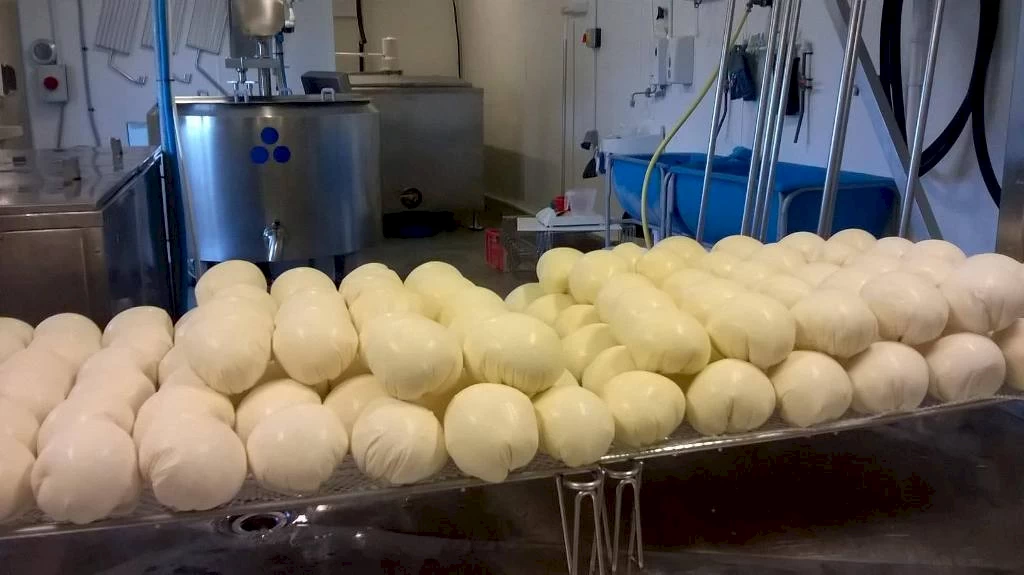
The Wilsons are not open to visitors but when I was there interviewing him I had our friend Maggie with me who runs an organic educational charity in Sussex. She and Jason had many common links with organic and biodynamic mentors but the cost of accreditation for such a peedie farm means Jason is unable to label his cheeses with the farming practices that he follows, a common problem for artisans. Again the gentlest of cutting and heating of the curds is key to producing the evenly textured cheeses that Jason and Nina make and sell through local delis and other good food shops in Scotland, such as Iain Mellis in Edinburgh. Kirkness & Gorie sell Westray Wife cut from the block while most other Orkney shops sell the very popular pre-cut packs as well as the fresh cheeses made by this hard-working couple. With the farm situated opposite the pock-marked ruins of Notland Castle, the Wilsons produce their 1 week matured fresh cheese Cannonballs. With a texture similar to halloumi this cheese is excellent for cooking, either fresh or once smoked by Pierowall Fish. The Notland Castle cheese is a larger version of the Cannonball.
When eating out in Orkney you are almost guaranteed to find Grimbister farm cheese on the menu, usually fried and with a hot or fruity sauce or relish. This fresh cheese is ready for sale from Grimbister Farm just four days after being made and is typical of the cheeses that farmers throughout the UK made when they had a surplus of milk. It is crumbly in texture and melts in a deliciously tempting way. As it ages slightly the lemony citric tang that fresh cheeses have becomes more accentuated and is the reason that it is so delicious with fruity or spicy accompaniments.
Grimbister is now made by Ann Seator, the daughter of Hilda, who started cheese making at the farm. I like to use the cheese in salads and sauces, and on baked dishes such as lasagne, or crumbled into a yogurt and egg topping for moussaka. I have also been treated to the occasional homemade Orkney cheese of this style made by a cheese enthusiast - just for the fun of cheesemaking.
A Cod and a Cox with Cheese
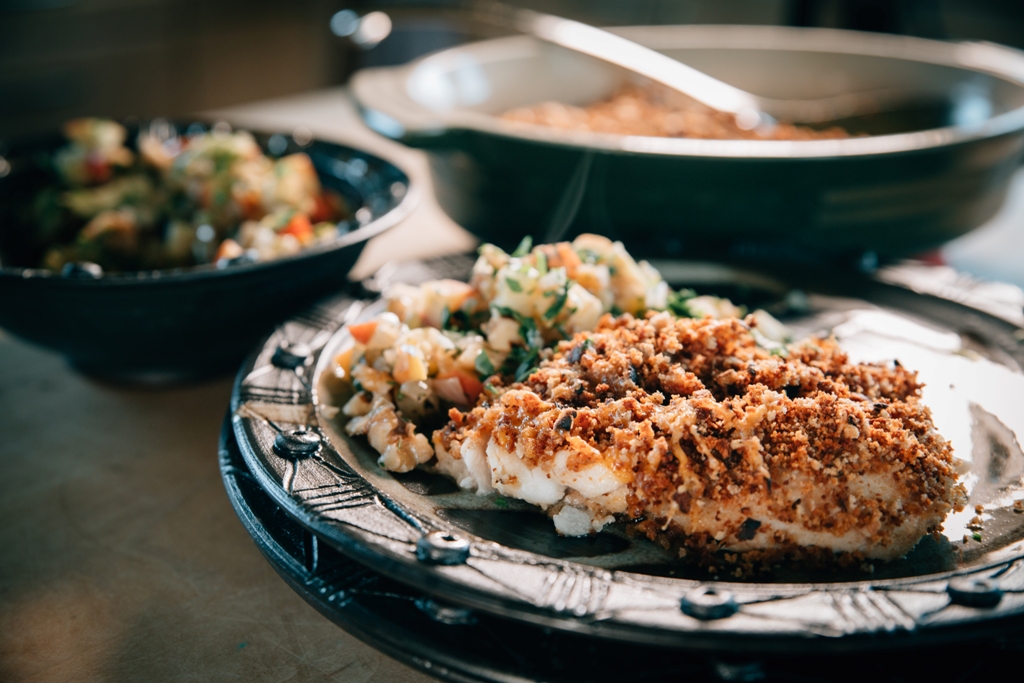
Use any white fish fillets for this recipe, which is also delicious when made with smoked haddock. The fish is baked with a cheesy bere bannock or bread crumb topping and served with a warm apple and nut salad. The Orkney Cheddar brings all the flavours of this dish together. Serves 4.
Ingredients
- 4 pieces of fish fillet, about 150-200g each
- 2 Cox’s, or other crisp red skinned apples
- 3 tbsp/40g hazelnuts or walnuts
- 1 shallot
- Parsley
- 50g Orkney Cheddar
- 3 tbsp dry or toasted bere bannock or breadcrumbs
- 1 tbsp beremeal
- 2 tbsp olive oil
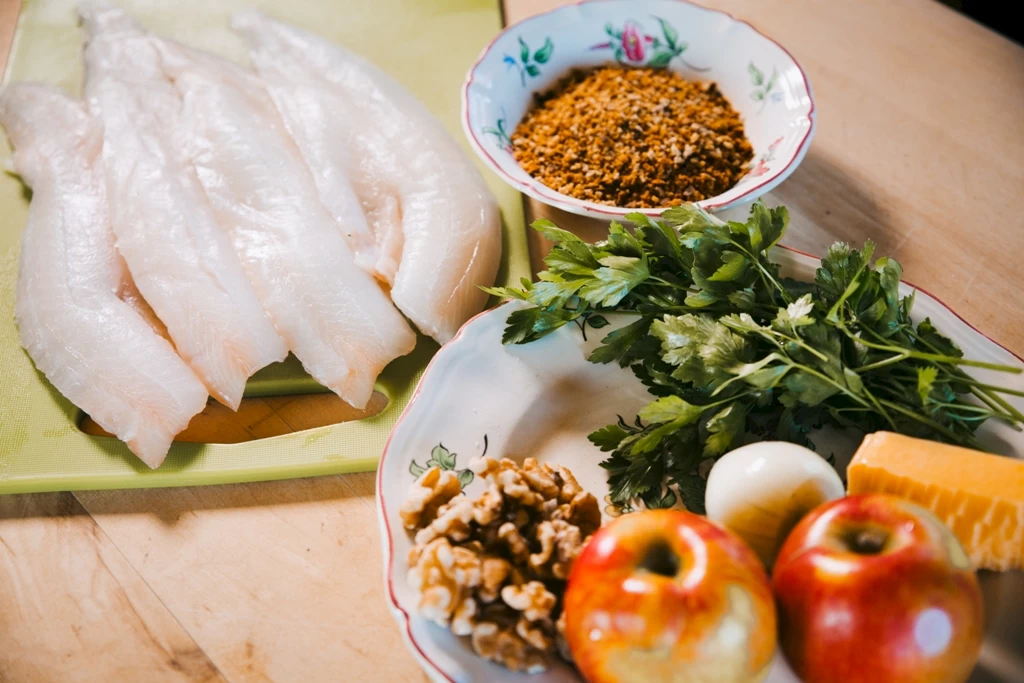
Method
- Preheat the oven to gas mark 6, 200°C. Season the fish lightly. Cut the apples into 6mm dice, roughly chop the nuts and finely chop the shallot and the parsley. Grate the cheese and mix it with the bannock or breadcrumbs and a little seasoning. Dust the fish fillets with the beremeal and season lightly.
- Heat a large non-stick frying pan, add the oil, then add the fish, skin side up, and cook for 2-3 minutes until browned. Turn, and place in an ovenproof dish. Scatter the cheese and crumbs over the top and bake for 10 minutes.
- Add the shallot to the juices in the pan and cook slowly for 2-3 minutes. Add the apple and continue cooking until just starting to soften, then add the nuts. Cook for 1 minute more, then season and add most of the parsley.
- Serve the fish with the warm apple salad on the side, scattered with the remaining parsley.
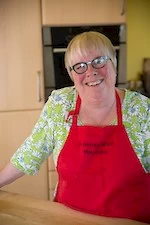 Rosemary Moon ‘retired’ to Orkney after a long association with the salmon industry in the islands. The author of 19 cookery books and countless more recipes, including writing for Waitrose and Lakeland, she has brought journalists and food writers to Orkney in the past to show off our diverse and delicious food and drink. After several holidays here Rosemary and her husband Nick have settled in South Ronaldsay but, once a cookery writer always a cookery writer, Rosemary is finding it impossible to stop jotting down the new recipes that she is creating with the island produce.
Rosemary Moon ‘retired’ to Orkney after a long association with the salmon industry in the islands. The author of 19 cookery books and countless more recipes, including writing for Waitrose and Lakeland, she has brought journalists and food writers to Orkney in the past to show off our diverse and delicious food and drink. After several holidays here Rosemary and her husband Nick have settled in South Ronaldsay but, once a cookery writer always a cookery writer, Rosemary is finding it impossible to stop jotting down the new recipes that she is creating with the island produce.
Rosemary also writes and vlogs about whisky and is particularly interested in whisky and food matching. You can follow her on Twitter, Instagram and on her rosemarymoon.com and myorkneylarder.com websites.
The Digital Orkney project has been part financed by the Scottish Government and the European Community Orkney LEADER 2014-2020 Programme.
